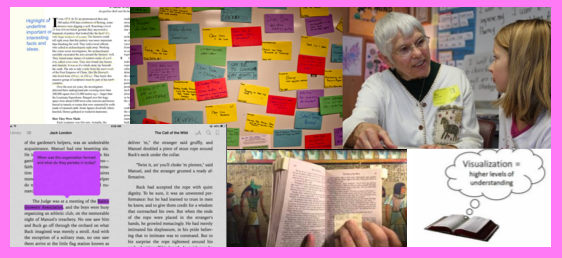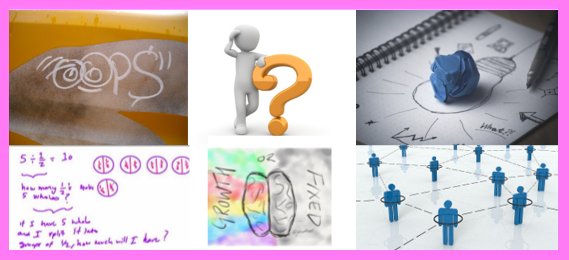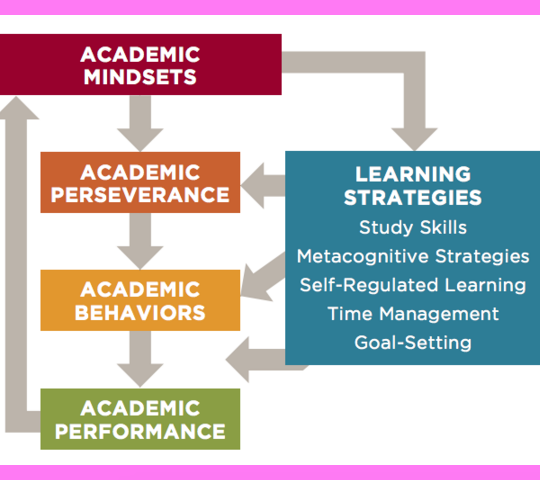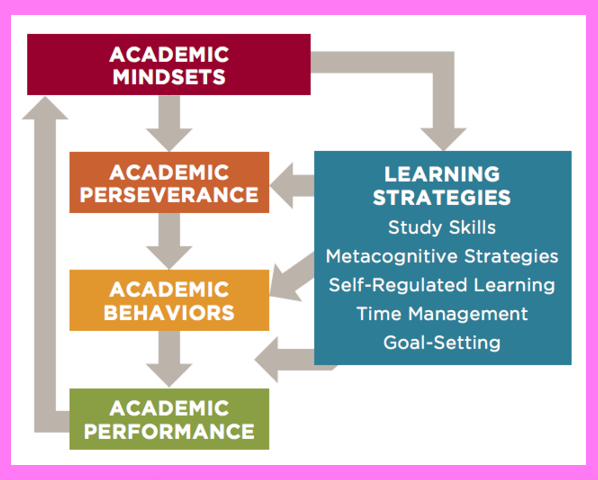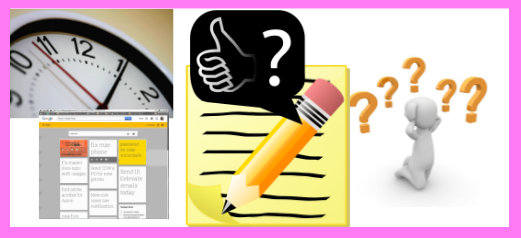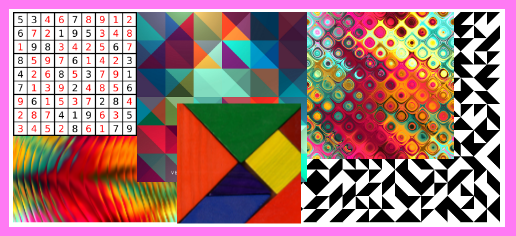


A Common Language for Investigating the Part:
- Using content, context and sub-text to summarize and evaluate historical sources can work for all units
- Need to repeatedly use content, context and sub-text reflections to build up student skills
- For guided questions related to content, context and sub-text, go this article: Making historical thinking a reality
Criteria for Selecting Sources
- Do not use more than 4 to 6 sources. Especially in the beginning.
- Read the sources ahead of time and check for:
- can lead to discussion related to driving question
- accessible to students
- Vary types of sources
- examples: cartoons, artwork, pictures, text, pop culture sources, maps, data tables, graphs, etc
- Aid students with:
- academic vocabulary
- contextualizing sources
- providing legible copies of sources (if they are originally in cursive)
- Make sources of comparable length if you are using the jigsaw strategy to distribute / share sources.
Initiating the Investigation
- Investigate sources and look for:
- lies,
- half-truths
- exaggerations
- rationalizations
- obfuscations
- Math / Science adaptations:
- Look at strategies or concepts and identify
- Always true
- Sometimes true
- Always false
- Sometimes false
- Look at strategies or concepts and identify
- Students read excerpt from Theodore Roosevelt’s autobiography about the Panama Canal and ponder the Driving Question
- What is Roosevelt doing in his autobiography (lying, telling a half-truth, exaggerating, rationalizing or obfuscating)?
- What role did the US play in the acquisition of the territory used to construct the Panama Canal?
- Math / Science adaptations:
- Could present or develop circle axioms (or other conjecture types) and ask:
- are these always, never or sometimes true?
- In what situations are they true?
- Could present or develop circle axioms (or other conjecture types) and ask:
Digging Deeper
- Students in teams are given one historical source and asked to answer questions related to the content, context and subtext of the source
- source represent a cross section of view about the Panama Canal
- 2 short guide questions:
- What role did US play in the Panamanian Revolution?
- Is there any info in this source that challenges assertions in Theodore Roosevelt’s autobiographical excerpts?
- Students in teams discuss their sources.
- Each team member read and analyzed different source
- Discuss different sources citing specific examples and quotes from their sources
- Alternatives to jigsaw approach:
- One person reads all sources – very time consuming
- Each group of 3 or 4 analyzes the same source and presents their findings to the class so whole class is exposed to all sources
- Math / Science Connection
- Jigsaw approach – Each person in the team examine a different piece of evidence and share interpretations, observations with whole team (all evidence relates to the same concept)
- Non-jigsaw approach – All students in same team of 2-3 solve the same problem – challenge students to develop multiple approaches to the same problem and use visuals to represent different approaches
Doing Source Work:
- Wineburg, Historical Thinking Matters Framework
- sourcing
- contextualizing
- close reading
- corroborating
- Hicks, et al. SCIM-C Strategy Framework
- summarizing
- contextualizing
- inferring
- monitoring
- corroborating
- In both approaches:
- students need to move beyond a single source
- examine relationships provided by each piece of evidence
- Corroboration phase -> legitimate interpretations of historical questions
- Math / Science connections:
- Math framework
- Asking questions
- Making models to answer questions
- Computations
- Relating model results back to real life to check if they apply
- Science framework
- Making observations
- Asking questions and hypotheses based on observations
- Designing data procedures
- Gathering, organizing, analyzing data
- Drawing conclusions
- Corroboration connections:
- In Math – verifying that multiple approaches led to the same solution
- In Science – verifying that different tests yield the same results
- Math framework
Complicating the Investigation
- Students corroborate their evidence by completing the following sentence stem:
- The various types of sources used to determine the purpose of Roosevelt’s autobiography created problems because …
- Math connections
- The various ways of representing the problem reveal different facets of the problem including …
- The various ways of solving the problem are good for different purposes including …
- Science connections
- The various data sources yield different conclusions because …
- The various data sources create problems because …
- Types of student responses:
- unreliable due to biased subtexts
- sources only try to portray their own biased viewpoints
- hard to know which source to believe
- contradicting viewpoints, hard to tell what really happened
- Student difficulties:
- Students struggle to make connections among content, context and subtext
- Another question that guides student corroboration of various sources: The subtext of the various documents was important to consider because …
- Math / Science connection
- The contexts / subtexts of the data are important to consider because …
- Student responses:
- explains why the source was written
- explain variety of opinions
- explains variety of evidence used by sources
- helped convey reliability of sources
- insights into intentions of authors
- helped to tease out truth in sources
- helped show biased in sources
- Math / Science connection
- “Overall when trying to interpret events from the past, you need to …”
- Math / Science connection
- Overall, when trying to interpret data, you need to …
- Student responses
- consider sources with different viewpoints
- research background info that reveals subtexts of sources
- compare information from different sources
- Student difficulties
- believe that bias negates validity of a source (mathematical approach to history)
- Math / Science connection
Student Interpretations – Transition Quick Write
- Transition quick write at end of day one: Attempt to answer the driving question
- Look fors in student quick writes:
- evidence from sources
- perspectives from multiple sources
- Math / Science connection
- Use driving question as quick write prompt
- Student difficulties
- Using evidence
- Bridging content, context, and subtext in interpretations
- Mathematical approach to history (problematic approach)
- require consensus among sources
- require lack of bias in sources
- Look fors in student quick writes:
Returning to the Investigation:
- End analysis by revealing most controversial and faceted source to students
- Math / Science connection
- Could reserve most nuanced and controversial piece of data for release near middle or end of project
Conclusions:
- Analyzing sources’ content, context and subtext can help student investigate the past rather than just memorize and regurgitate text excerpts
- Teacher resistance
- kids can’t do this work
- responses
- studies have shown that this type of work can be done by elementary school students
- teacher perseverance helps students acquire student skills
- historical investigations make history more interesting
- prepares students with skills they can use in any career
- responses
- kids can’t do this work

Finding the right evidence and fashioning the right driving question can make boring topics interesting to students. Releasing evidence at various points in the project can start and reinvigorate conversations related to the driving question. Using content, context and subtext to analyze evidence can teach students how to investigate, question and interpret evidence.

Preparation Steps
- Collect evidence (data, sources, etc) that students can use to explore content by investigating a driving question
- Design driving question
- Design thinking sheets that help students examine content, context and subtext of sources
- Design prompts to facilitate conversations that corroborate evidence – see above for examples.
Early Implementation Steps
- Use a controversial or provocative source to introduce a driving question
- Assign sources (various) to students working in teams
- Individually assign students to examine the content, context, and subtext to different sources within a team.
- Get students to answer prompts as a team that get them to corroborate their sources and formulate interpretations that address the driving question
Advanced Implementation Steps
- Gather evidence and sources that uncovers current problems that relate to central concepts in your course. Design project and driving questions around that set of sources.

- PBL articles
- History articles
- Mathematics articles
- Literacy articles
- Making historical thinking a reality
- Essential questions
- Crafting driving questions


